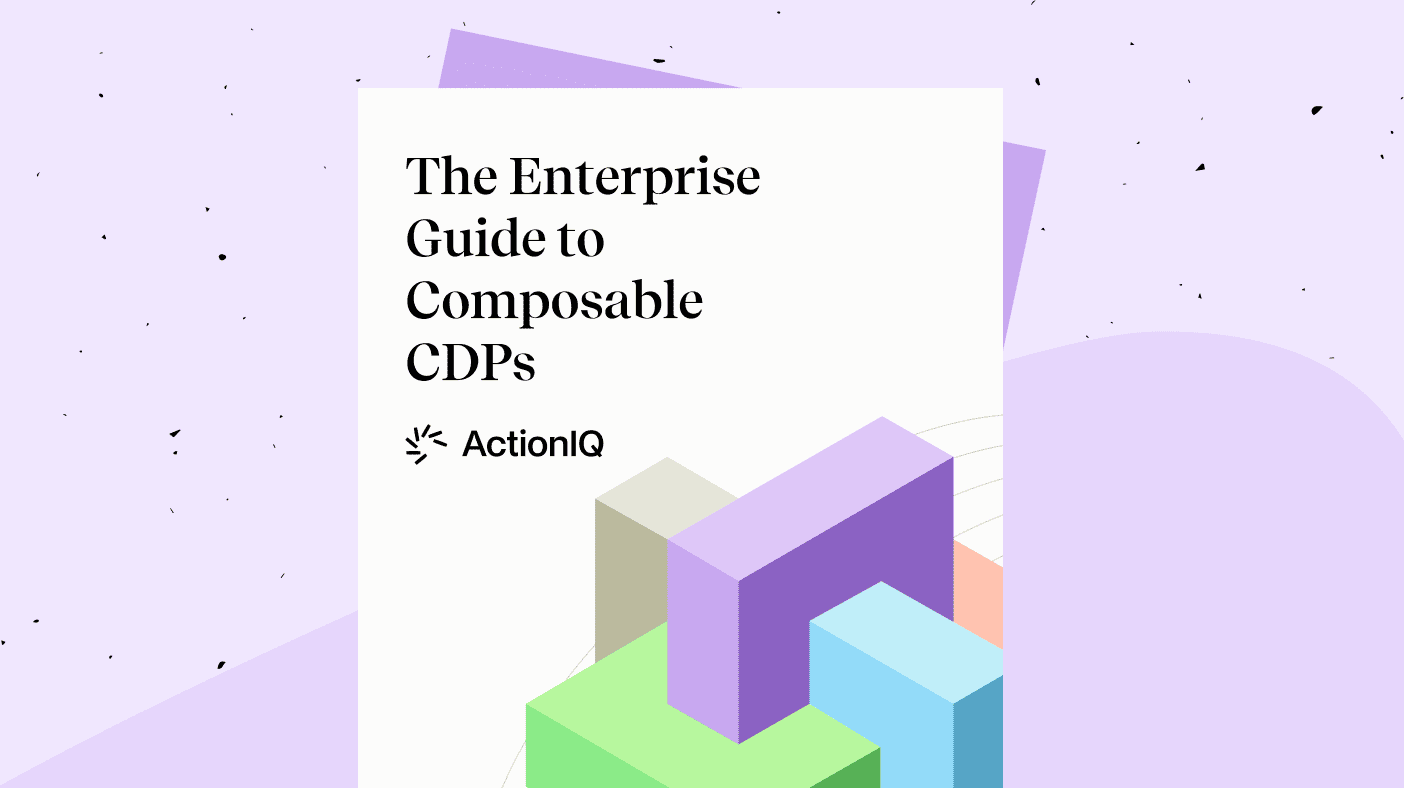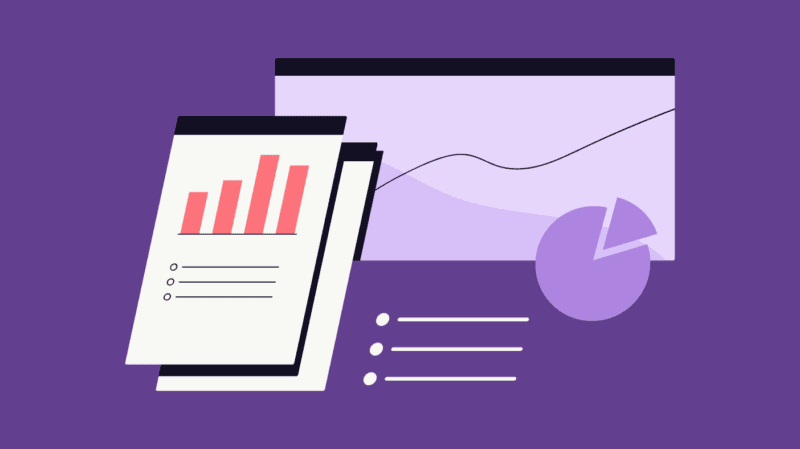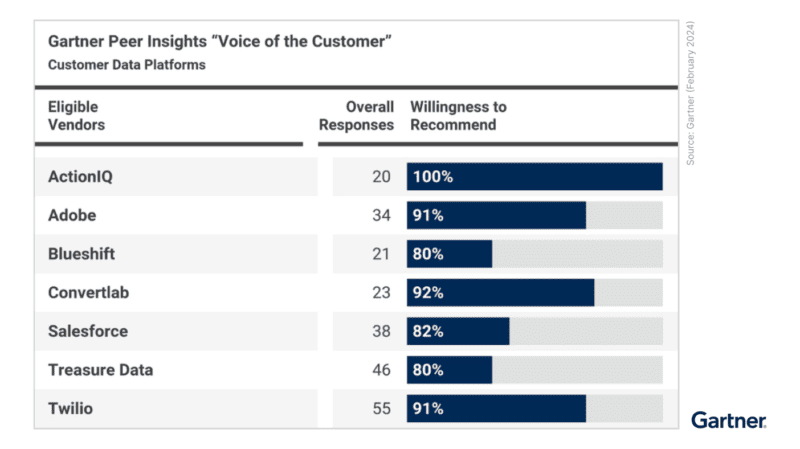How Atlassian’s Composable CDP Strategy Delivers Where Bundled CDPs Fail

Brands using a customer data platform (CDP) or evaluating one have likely seen ominous headlines about the death of traditional all-in-one CDP solutions, which are guilty of combining infrastructure and application layers. Taking their place is a new CDP strategy comprised of composable solutions that promise vastly improved flexibility by offering the same marketing toolset with better options to integrate with a brand’s existing data infrastructure.
ActionIQ spoke with Sravan Gupta, Senior Manager of GTM Systems at Atlassian and Steve Sobel, Global Head of Communications, Media & Entertainment at Databricks to explore the driving forces behind the failure of bundled CDPs and the benefits of composable CDPs. Check out our takeaways from the webinar below.
How Atlassian’s Composable CDP Strategy Delivers Where Bundled CDPs Fail
A Bundle of Problems
Every CDP has the capability to improve key lifecycle marketing use cases, from customer acquisition to onboarding and retention. But that hasn’t been playing out consistently across the industry.
“Many CDPs fail to deliver results for businesses, and the biggest thing that gets in the way is the tension between technical teams and marketing teams,” said Michael Trapani, Head of Product Marketing at ActionIQ. “You have a marketing team that’s looking for ease of use to create audiences and leverage data to engage with customers. And then you have the technical folks that are looking to ensure security, consolidation and efficiency,” he continued.
The problem, Trapani states, is that few CDPs offer capabilities that completely satisfy both technical teams and marketing teams. This leads to critical tradeoffs, underutilization and ultimately limited business impact driven by the CDP.
Atlassian, the developer of team collaboration software like Jira, Confluence and Trello, has experienced this once before. The company took its first step on its CDP journey with the selection of a bundled CDP that addressed important marketing use cases, but proved incapable of keeping pace with their existing infrastructure.
“We have over 90 marketing applications at Atlassian and tons of home-built applications,” said Sravan Gupta, Senior Manager of GTM Systems at Atlassian. “In selecting our first CDP, we didn’t fully appreciate two critical things: the solution needed to integrate with all of those systems, and it needed to truly scale. Even if a vendor can handle amazing data volumes, when you throw in a bit of complexity in the data model, things start to break.”
The inability of the CDP to work within their architecture hamstrung their marketing use cases and frustrated technical teams.
“We want to build on what we already have,” said Gupta. “The data engineering teams have done incredible work over the years to create business domain models, for example, and we don’t want to start over from scratch.”
Steve Sobel, Global Head of Communications, Media & Entertainment at Databricks, sees this story play out frequently among Databricks customers.
“CDPs get purchased and then don’t get support from data engineering,” he said. “Critically, that team may not support high volume pipelines like clickstream data. What’s even the point of having a CDP if you’re not bringing in one of the richest datasets your organization has for downstream personalization?”
Businesses evaluating customer data platforms must be cautious that any bundled solution will introduce significant data engineering work. “You don’t just flip a switch and have a CDP and all your pipelines are there,” said Sobel.
Composable CDPs Enable IT-Friendly CDP Strategy for Marketers
Stories like Atlassian’s gave rise to composable CDPs, which are defined by their ability to reduce resource drain on data engineering.
“The marketing toolset for composable CDPs like ActionIQ are decoupled from any infrastructure layer,” said Trapani. “This allows organizations to map the platform directly to any customer data warehouse and query data directly in that environment, instead of needing to build expensive data pipelines that bring copies of data into the system.”
By using a composable CDP, the marketing team gains the functionalities they need for their use cases, while IT teams can remain singularly focused on their existing infrastructure and data centralization work.
“Technical teams corralling data from across the enterprise into a Databricks lakehouse, for example, shouldn’t have to dedicate even more resources to doing the same for marketers,” said Trapani. “Instead, CDP technology should tap into that data strategy without additional engineering and drive real business impact.”
With business models as complex as its data models, Atlassian approached selecting a new, composable CDP with a focus on scalability and marketer accessibility.
“There aren’t enough data scientists and analysts in the world to tackle the problem of getting all the data that marketers need,” said Gupta. “So they ultimately become a bottleneck in creating necessary segments and activating them to the right channels.”
Going composable provides many benefits from a technological perspective.
“Composable architecture enables us to reduce vendor lock-in and help control total cost of ownership of our stack,” says Gupta.
On top of that, the company’s underlying business objectives for a CDP are finally being met.
“Atlassian has found incredible savings on paid ad spend due to the increased scale of suppressions – being able to stream millions of records to ad platforms to suppress ineligible customers,” said Gupta.
“And campaign velocity has shot up because we’ve removed the bottleneck of data teams from writing SQL queries to create audience segments. Instead, we can give that power to somebody in marketing operations or the marketers themselves to create these segments and power these digital campaigns. That has reduced our time to market by almost 20% on omnichannel campaigns,” he added.
Leading Brands Are Adopting a Composable CDP Strategy
Composable CDPs are emerging at a time when marketers across industries are feeling increased urgency to deliver efficient customer acquisition, growth and retention.
“At Databricks, we hear from a lot of our customers that they are still struggling to scale critical use cases,” said Sobel. “For example, omnichannel should be table stakes, but most are still marketing in silos. Compliance with evolving privacy regulations remains a challenge. And personalization for some customers is still a twice-daily pipeline update – far from real-time recommendations.”
Bundled CDPs have provided solutions to some of these problems. But pervasive limitations around those vendors’ data infrastructure will always hamper a complete solution.
“Brands are realizing that your CDP strategy frankly has to be an extension of your data strategy rather than a silo in itself,” said Sobel. “Having access to all of the data that would sit in your data lake or data warehouse is super important. Marketers want the flexibility to bring in any and all data.”
Customers of Databricks are increasingly adopting a composable CDP approach for its enterprise-wide benefits, he said.
“Given the economic climate, a lot of our customers are concerned about the total cost of ownership of their data estate. They’re looking to reduce the number of systems they license and support. So it’s not just about marketers and data teams, but also the C-suite”
– Steve Sobel, Global Head of Communications, Media & Entertainment at Databricks
Prepare for an Unbundled Future
Bundled CDPs won’t disappear overnight, as many organizations have already made investments in teams, technologies and processes to support such solutions and key outcomes they are driving.
However, as companies continue to evaluate and optimize their data and marketing technology strategies, composability will become a key requirement. For brands like Atlassian, the benefits to team efficiency and bottom-line outcomes have been too significant to ignore.
Learn More About Updating your CDP Strategy
For more information on composable CDPs, download The Enterprise Guide to Building a Better CX Stack or reach out to our experts for a custom demo.





